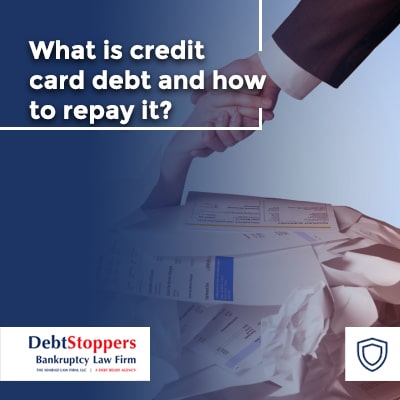How to take care of your debt: strategies for dealing with debt

Dealing with debt requires a combination of strategic planning, budgeting, negotiation skills, and financial discipline. By assessing your financial situation, creating a realistic budget, prioritizing debts, exploring consolidation options, increasing income, cutting expenses, building an emergency fund, seeking professional advice when needed, and staying committed to your repayment plan, you can effectively manage and eventually eliminate your debt. Each step taken toward financial freedom brings you closer to a fresh financial future.
What is debt relief?
Debt relief refers to various strategies and programs designed to help people reduce or eliminate their debt burdens. These strategies aim to make your debt more manageable, either by reducing the amount owed, altering the terms of repayment, or providing other forms of financial assistance.
The main types of debt relief include debt consolidation, balance transfer credit card, debt settlement, negotiating with creditors, credit counseling, Debt Management Plans (DMPs), debt forgiveness programs, student loan forgiveness, and mortgage assistance programs, and bankruptcy.
It's essential to carefully consider the options and their potential impacts on your financial situation. Consulting with a bankruptcy attorney can help determine the best debt relief strategy for your specific circumstances.
How to take care of your debt?
Managing and eliminating debt can seem daunting, but with a structured approach, you can take control of your financial situation. Here are some practical strategies to help you take care of your debt:
First, assess your financial situation by gathering all your financial information and calculating your total monthly income and expenses to understand your cash flow.
Next, prioritize your debts. Commons strategies include the debt snowball method and debt avalanche method.
Also consider ways to increase your income by taking on extra work, selling unnecessary items, or utilizing your skills or hobbies to create a side hustle.
It’s important to cut non-essential spending. You may also have luck contacting service providers to negotiate lower rates. Additionally, you can implement cost-saving measures, such as cooking at home, using public transportation, and conserving energy.
You should also explore debt relief options including debt consolidation, balance transfer credit card, credit counseling, debt settlement, and bankruptcy.
Taking care of your debt requires a proactive and disciplined approach. By assessing your financial situation, prioritizing debts, increasing your income, reducing expenses, exploring debt relief options, developing healthy financial habits, and monitoring your progress, you can effectively manage and eliminate your debt. Consistency and commitment are key to achieving your financial goals.
Create a budget
Develop a detailed budget that accounts for all your income and expenses. Allocate funds for essential living expenses, savings, and debt repayment.
Think about your expenses
It’s important to carefully consider all of your expenses to identify and reduce or eliminate non-essential expenses, such as dining out, subscriptions, and entertainment.
Negotiate with creditors
You or your attorney can negotiate with creditors to accept a lump sum payment that is less than the total amount owed. This can reduce the overall debt but may impact your credit score and have tax implications.
Seek financial counseling
You can also seek financial counseling by working with a certified credit counselor to assess your financial situation, develop a budget, and create a personalized plan to address your debt. These services are often provided by non-profit organizations dedicated to helping individuals manage their finances.

How long does it take to repay US debt?
The average debt in the US varies widely based on the type of debt and demographic factors such as age, income, and location. Here's an overview of the most common types of debt and their average amounts:
-
Total Household Debt - As of the latest data from the Federal Reserve, the total household debt in the US reached approximately $17 trillion.
-
Mortgage Debt - Mortgage debt is the largest component of household debt. The average mortgage debt per household is around $210,000.
-
Credit Card Debt - The average credit card debt per household with credit card debt is about $7,000. However, for households that carry a balance month-to-month, the average balance can be significantly higher.
-
Student Loan Debt - Student loan debt is a major financial burden for millions of Americans. The average student loan debt per borrower is approximately $37,000.
-
Auto Loan Debt - Auto loans are another significant form of debt. The average auto loan debt per borrower is around $20,000.
-
Personal Loans - Personal loans have become increasingly popular. The average personal loan debt per borrower is approximately $17,000.
-
Medical Debt - Medical debt can be substantial for anyone without adequate health insurance. While the average medical debt can vary widely, estimates suggest that around 20% of Americans have some form of medical debt.
Debt is a common aspect of financial life in the US, with the average amounts varying significantly by type and demographic factors. Understanding your debt and implementing effective management strategies can help you achieve financial stability and reduce your overall debt burden.
How does emergency debt relief work?
Emergency debt relief is designed to provide immediate assistance to people facing severe financial hardship, such as job loss, medical emergencies, or natural disasters. Common forms of emergency debt relief include:
-
Debt Forbearance - Debt forbearance is a temporary pause or reduction in loan payments. Lenders agree to suspend or lower payments for a specified period, usually three to six months, allowing borrowers time to recover from their financial crisis.
-
Debt Settlement - Debt settlement involves negotiating with creditors to accept a lump-sum payment that is less than the total amount owed. This can be done directly by the borrower or through an attorney or debt settlement company.
-
Credit Counseling and Debt Management Plans (DMPs) - Credit counseling agencies offer financial education and help create a budget. They may also offer Debt Management Plans (DMPs), where the agency consolidates your unsecured debts into one monthly payment and negotiates lower interest rates and fees with creditors.
-
Bankruptcy - Bankruptcy is a legal process that provides relief from debts. The two main types of personal bankruptcy are Chapter 7 and Chapter 13.
-
Government Assistance Programs - Various federal, state, and local programs provide financial assistance for specific types of debt or financial hardship.
Emergency debt relief provides vital support for individuals facing financial crises, offering temporary relief and a pathway to regain financial stability. By understanding the available options and taking proactive steps, you can effectively manage your debt during challenging times.

What is credit card debt and how to repay it?
Credit card debt refers to the money owed to credit card issuers for purchases made using credit cards. When you use a credit card to make purchases, you are essentially borrowing money from the issuer. If you do not pay off the full balance by the due date, you incur interest charges on the remaining balance, which can quickly accumulate.
Managing and repaying credit card debt requires a strategic approach to avoid high-interest charges and financial stress.
First, create a budget and allocate funds for debt repayment, pay more than the minimum, and consider using the Debt Snowball or Debt Avalanche Method.
With the Debt Snowball Method, start by paying off the smallest balance first while making minimum payments on larger debts. Once the smallest debt is paid off, apply the payment amount to the next smallest debt.
With the Debt Avalanche Method, you prioritize debts with the highest interest rates first. By focusing on high-interest debts, you save money on interest payments over time.
You can also consider debt consolidation including balance transfers and personal loans.
If you're struggling to make payments, contact your credit card issuer to discuss options such as lowering your interest rate, waiving fees, or setting up a repayment plan. Many issuers have hardship programs to assist customers facing financial difficulties.
While you are paying off debt it’s important to avoid adding debt. To avoid adding to your debt, you can temporarily stop using credit cards for new purchases.
Credit card debt can accumulate quickly due to high interest rates, making it essential to have a repayment strategy in place. By creating a budget, paying more than the minimum, using debt repayment methods like the snowball or avalanche, considering consolidation options, negotiating with creditors, avoiding new debt, increasing income, and seeking professional help when needed, you can effectively manage and repay your credit card debt while working toward financial freedom.





